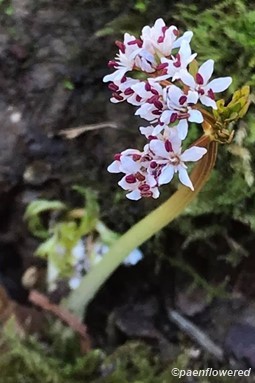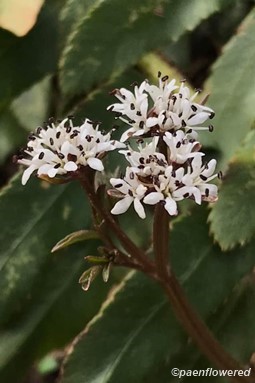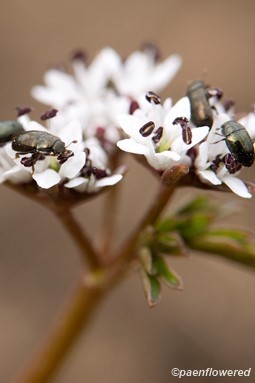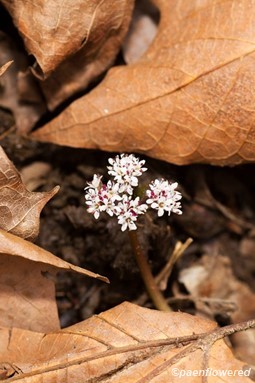Erigenia bulbosa
The first of spring flowers, a true harbinger of spring
Erigenia bulbosa harbinger-of-spring
This is another early blooming wildflower that you should look for during your early spring hiking ventures. It, however, is not as common as other early spring flowers. In Pennsylvania it is considered a threatened species. Certainly their distribution is spotty.
This plant is a perennial member of the carrot family and the only member of its genus. This flower has a unique and interesting appearance. The plant grows from a round underground tuber. Each bulb gives rise to a single purplish stem. The compound leaves mostly lie horizontal to the ground and grow up to 5 inches long and 3 inches wide. Each leaf is divided into narrow-oval or lobed segments.
The plant produces a white flower cluster called an umbel with green leafy bracts at the base. The four white teardrop-shaped petals of the clustered flowers may touch each other when the flower is not fully extended. The stamen tips are a conspicuous red-brown color and the best way to recognize this species. Solitary bees are the major pollinators of this species, though honeybees and flies sometimes visit this flower. The plant grows 4-9 inches high.
This species is found in the northeastern and Midwestern United States, mostly west of the Laurel Mountains, including several counties in western and southwestern Pennsylvania. It often is found in the same habitat as the spring beauty and the cut-leaf toothwort. Depending on location and weather the blooming period is from February to May. It is sometimes confused with early blooming cress species.
The bulb is edible both cooked and raw. The Cherokees were known to chew this plant as a remedy for toothache, though which part they used is not known. It is a popular plant for native flower gardens, but should not be transplanted from wild populations.
Habitat & Range
Grows in seeps and spring heads on wooded slopes.
Present in the west and lower Susquehanna Valley.
Wetland code: Not classified
Phenology
Flowers March to April.
Plant Codes
PA-status: PT (Threatened)
S-rank: S3 (Vulnerable)
G-rank: G5 (Secure)








Comments
Have you spotted this plant in your area? We'd love to hear about your experience! Share your comments or questions about the plant below. Comments are moderated before posting.